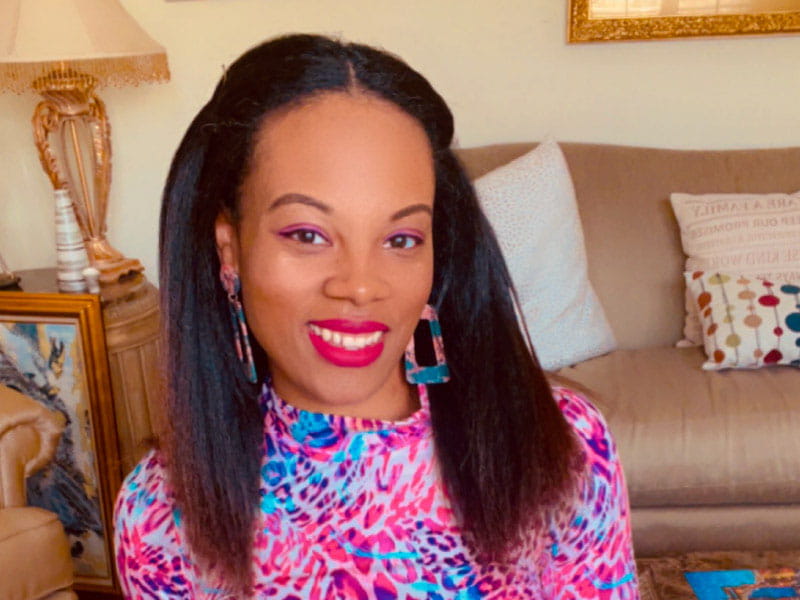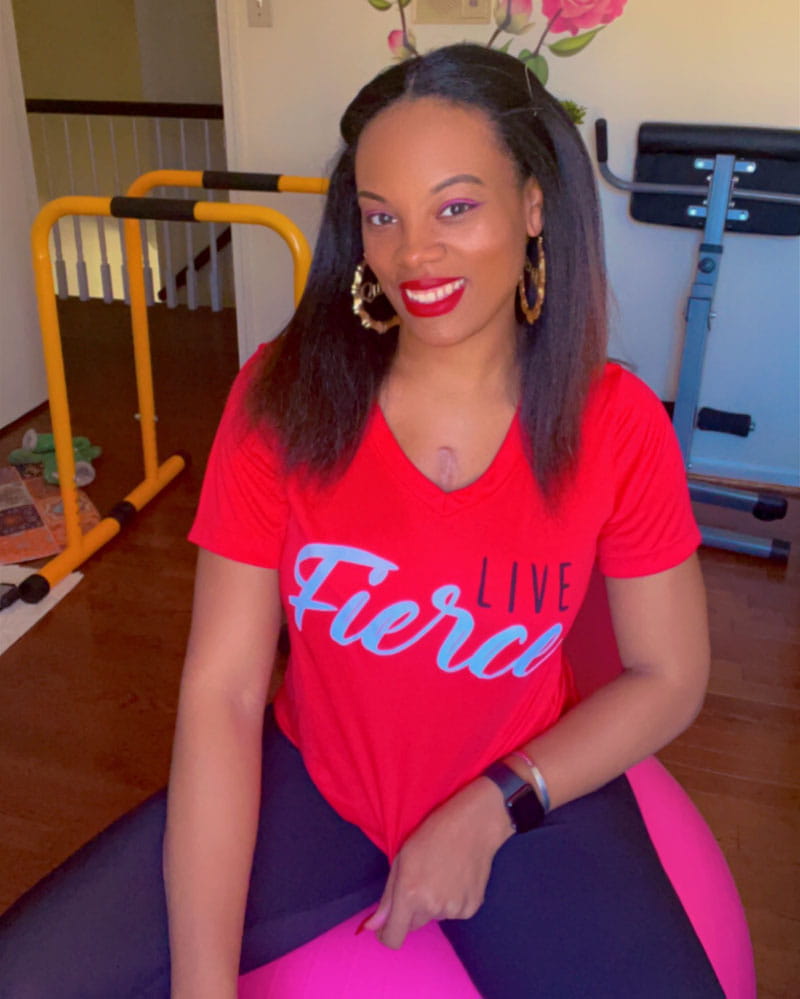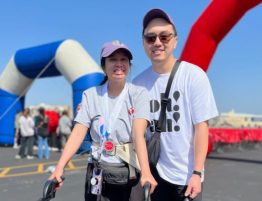
When she’s not baking cookies for her dessert business, Olivia Rose can often be found pumping iron at the gym. For years, she participated in amateur bodybuilding competitions and even hoped to go pro.
At 25, she had the chance to make that happen – if she could finish in first or second place in a particular competition. “I looked the part,” she said. “I thought I was going to win.”
As she waited for her turn on the stage, she started feeling nauseous, hot and jittery. She figured it was nerves. She tried to calm herself down. Then she collapsed.
Paramedics were already onsite for the competition. They rushed her to a hospital, where she was diagnosed as having a stroke. Doctors gave her clot-busting medication. (It can only be given within about four hours of the onset of symptoms.) She went from not being able to talk or move her left side to fully functioning, all within seconds of the medicine entering her system. “It was a miracle,” she said.
Further tests revealed that Rose had a type of heart failure called dilated cardiomyopathy, which occurs most commonly in people younger than 50. It causes the heart muscle to stretch and become larger. As a result, it can’t pump blood as effectively to the rest of the body. It can lead to blood clots in the heart, irregular heartbeats and problems with the heart’s valves.
Indeed, Rose’s ejection fraction – or the amount of blood the left ventricle pumps out with each beat – was only 10%. In healthy people, a heart’s ejection fraction is between 55% and 65%.
Rose soon discovered that her first cousin also had dilated cardiomyopathy. The condition is inherited in up to half of cases.
Rose’s primary care doctor prescribed medication to treat her failing heart. When that only raised her ejection fraction to 25%, doctors told Rose she needed a device called an implantable cardioverter defibrillator, or ICD, which monitors the heart rate and can help restore a normal rhythm if it detects a problem.
“When people have weak hearts, they are more prone to having a bad heart rhythm called ventricular tachycardia, and that can cause sudden death,” said Dr. Erika D. Feller, an advanced heart failure and transplant cardiologist who treated Rose.
After the procedure, Rose resumed her normal daily activities. In addition to working, she was allowed to lift weights and even participate in bodybuilding competitions. She managed to work out without feeling fatigued or out of breath – for a few years, at least.
Rose began gaining weight and becoming winded more easily. She had trouble keeping food down.
Feeling sicker by the day, she went to urgent care. She was in the bathroom there when everything went black.
When she woke up, she was in the hospital, surrounded by family. Her face was sore and she couldn’t speak or move her right side. She’d had another stroke.
This time, doctors performed a thrombectomy, a procedure in which they remove the clot from the brain. After a few days, Rose went home, but she still had trouble keeping food down. Something else seemed to be wrong.
Her heart was failing.
Ultimately, doctors implanted a left ventricular assist device, or LVAD, an external battery-powered heart pump. It’s often used as a bridge to transplant. She called that open-heart surgery “the most painful experience of my whole life.”
Recovery was tough, as she had to relearn how to walk, talk and write. Unable to swallow food for about two weeks, she lost 30 pounds. Increasingly fatigued, she shut down her dessert business. “I call 2019 the year of tears because I was crying every day,” she said. “I lost everything.”
After nearly a year of physical, speech, occupational and cardiac rehabilitation, Rose was well enough to be placed on the heart transplant waiting list. She expected the process to take years. Less than two months later, she received the call. They had found a match.
In contrast to the aftermath of her LVAD surgery, Rose recovered quickly. The then-34-year-old went home two weeks later. “Younger people generally do better with things like recovery,” Feller said. “She really partnered with us and wanted to take care of herself. That makes her such a great patient.”
Four years later, Rose has made it her mission to raise awareness about heart disease, particularly in fit, young people. She has volunteered for the American Heart Association and shared her story with medical school students.

She recently joined a heart failure website as a moderator and contributor, and preaches the importance of an active, healthy lifestyle.
She also launched a new dessert business, selling a line of baked treats at farmers markets near her home in Fort Washington, Maryland. Red velvet and s’mores cookies are her favorites. “I like to play music, zone out and be creative while I bake,” she said. “It feels so great to be back in the kitchen.”
Stories From the Heart chronicles the inspiring journeys of heart disease and stroke survivors, caregivers and advocates.



